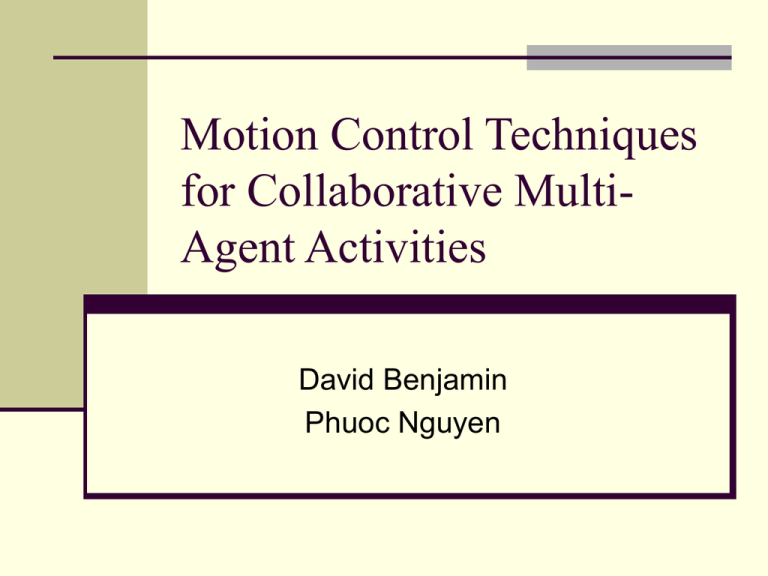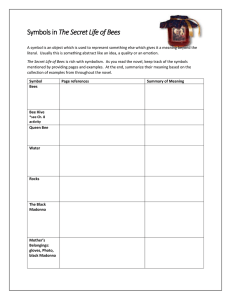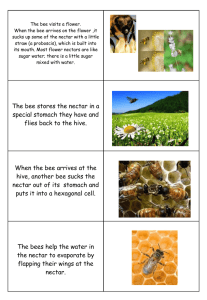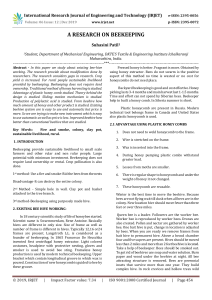Motion Control Techniques for Collaborative Multi- Agent Activities David Benjamin
advertisement

Motion Control Techniques for Collaborative MultiAgent Activities David Benjamin Phuoc Nguyen What is an Agent? An agent is a system situated in, and part of, an environment, which senses that environment, and acts on it, over time, in pursuit of its own agenda. This agenda evolves from programmed goals. The agent acts to change the environment and influences what it senses at a later time. Motion Control In the field of automation, it involves the use of devices such as hydraulic pumps, linear actuators, or servos to control the position and/or velocity of an object. In the field of multi-agent, collaborative systems it is the control of the position and/or velocity of agents so that the agents can work together to accomplish a goal. Motion Control Centralized Control A single point of control where the controller gathers all of the information in the environment (including the state of each agent) and the plans the motion for the each agent Central controller has high level complexity Requires a high bandwidth communication link May be impractical for battery powered agents Distributed Control Each agent determines its motion by sensing the environment and then reacting according to a set of rules Agents are unaware of the agendas of other agents. Does not require communication with a central controller. Simpler implementation. Flexible. Social Potential Forces Initially used for obstacle avoidance. Obstacles and agents are assigned negative charges Goal destinations are assigned positive charges A maximum electric field is formed when the agent and the obstacles are within close proximity (repelling forces). A minimum electric field is formed when the agent and the obstacles are within close proximity (attractive forces). The agent will naturally avoid obstacles while it moves toward its goal destination. Social Potential Forces Attractiv e Force Repulsiv e Force Resultan t Field Agent Path Key Terms VLSR - Very Large Scale Robotics System Global Controller – defines the pair-wise potential laws for ordered pairs of components Global Control Force – resultant force calculated by each robot. Global in the sense that it coordinates the agents and determines the distribution of the agents throughout the system. Local Control Force – The individual attractive and repulsive forces sensed by an agent. Leading Agents – Mobile agent with a preprogrammed path. Landmark Agents – Have a fixed position. Are immune to social potential forces, but imposes social potential forces on ordinary agents. Ordinary Agents – Mobile agent that is subjected to social potential forces and also imposes social potential forces on other agents. Beehive Simulation Each bee is an ordinary agent. Imposes a repulsive force on other bees Is subjected to attractive forces of the flowers and the beehive Flowers and beehive are landmark agents. Impose attractive and repulsive forces on the bees Potential-Based Implementation Agents do not make any decisions All movements are triggered by active forces All agents implement their own force model Flowers and beehive have attractive forces to each bee Bees have repel force Design Simulation class contains main scheduler Map2D Simulate the environment Mobile node that gather nectar Move to interest area base on potential fields direction and magnitude DisplayFrame Represent a sink node Store nectar or collectable data BeeAgent Represent an area/object of interest Supply collectable data (nectar) BeehiveAgent Account for all entities Process potential fields FlowerAgent Initialize the scenario Control the simulation rate Java base GUI Display movement in realtime DataCollector Record simulation data Export data to excel spreadsheet Load Balancing Mechanism to prevent swarming affect Each flower have a queuing service. If queue is full, attractive force is greatly reduce Attractive force has an inverse distance square relationship Bees have a repel force on each other Bees have a maximum load capacity it can carry Force threshold As the bee capacity increase, its attraction to the hive also increase. And the attraction to flowers will decrease. Once hive attraction overtake the flower by a certain threshold, the bee will change direction and head back to the hive. Movement Model FL Beehive FL FL Simulation Results Configuration: Four flower with equal nectar 10 Bees total 2 Exercises, linear and square force model Performance is approximately identical Simulation Results Configuration: Four flower with variable nectar 10 Bees total 2 Exercises, linear and square force model Performance is approximately identical Market-Based Collaboration Collaborative mechanism employed by the Autonomous Collaborative Mission Systems (ACMS). Aimed at controlling groups of heterogeneous agents. Two stage process Bid solicitation Contract award Market-Based Collaboration Role-Based Approach Based on the E-CARGO model Each agent or group agents is described as a 9tuple <C,O,A,M,R,E,G,S0> C is a set of classes O is a set of objects A is a set of agents M is a set of messages R is a set of roles E is a set of environments G is a set of groups S0 is the initial state of the system Role-Based Approach Roles specify how an agent behaves at a specific context within a limited period Each agent will only respond to a subset of messages that are defined by its role. Each agent will respond differently to the same message based on its role. Each agent can be programmed to play many different roles based on the state of the environment and/or the messages it receives. Demo Questions? Citations




